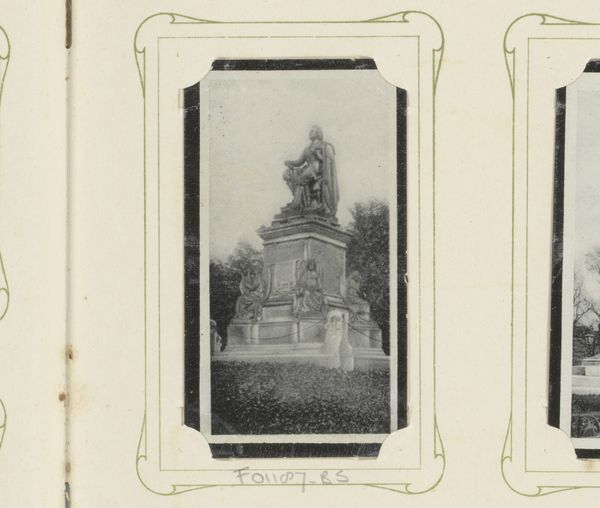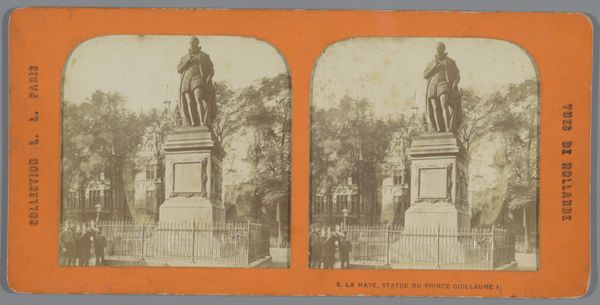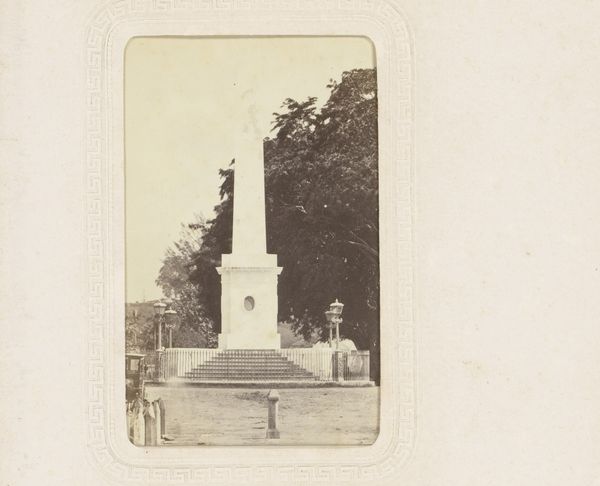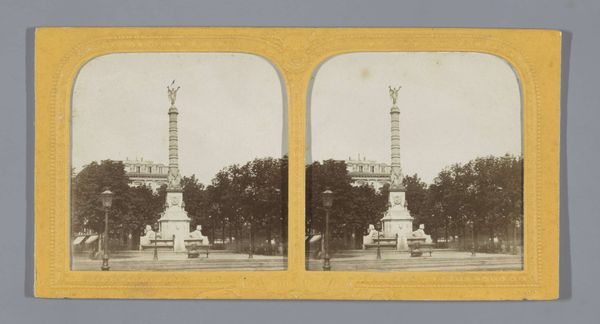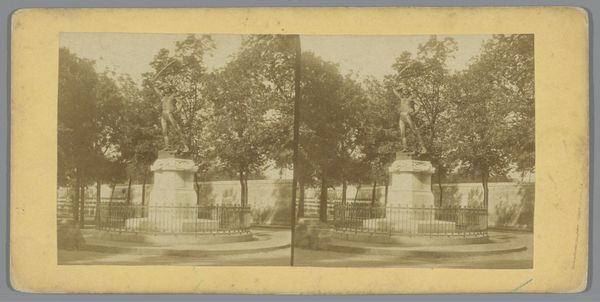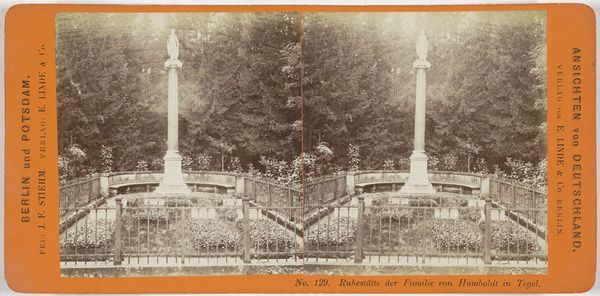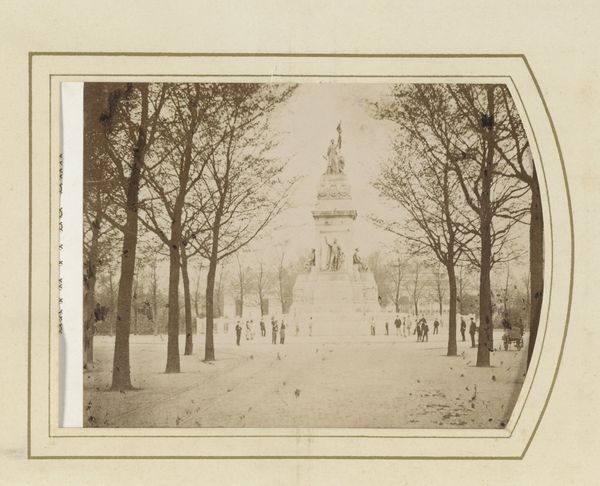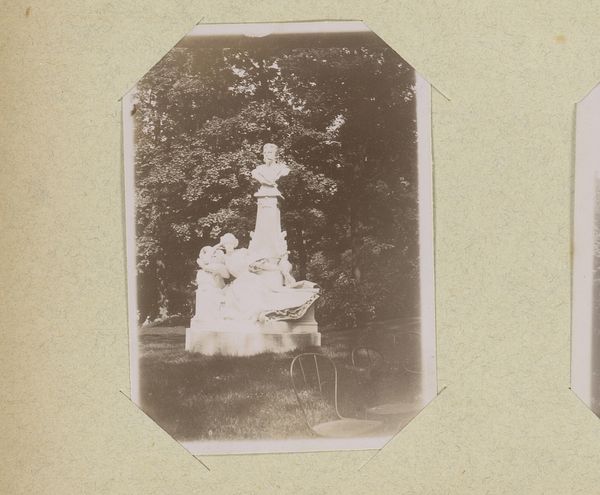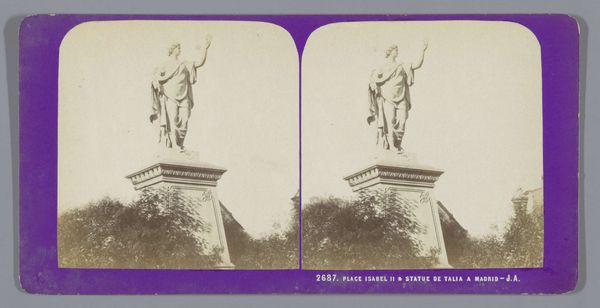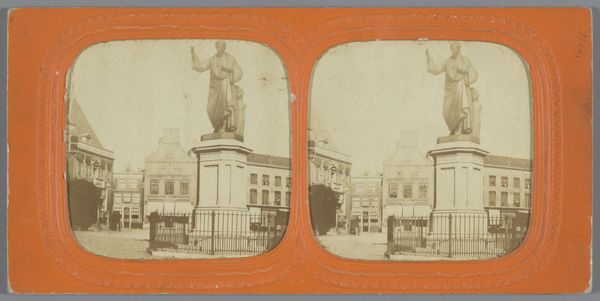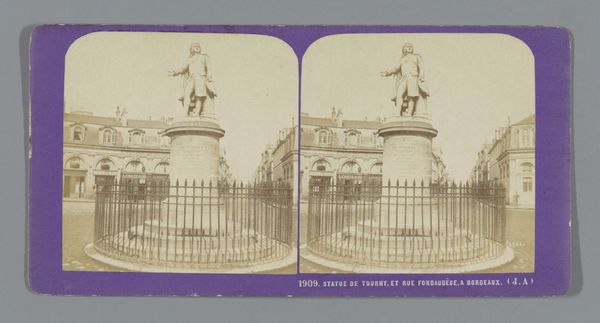
Dimensions: height 82 mm, width 45 mm
Copyright: Rijks Museum: Open Domain
Curator: This photograph documents the "Standbeeld van Frans Hals in het Florapark in Haarlem," a sculpture dating from 1905 to 1906. The photograph is part of the Rijksmuseum collection. Editor: It's a rather imposing figure, isn't it? Stern even. The statue is elevated high on its pedestal, seemingly gazing down at park visitors. I feel a powerful, historical presence. Curator: Public monuments like this serve a distinct social function. They are carefully designed to shape public memory, reinforce societal values, and even establish a specific civic identity. Consider who gets memorialized, where the monuments are placed, and whose stories are deemed worthy of commemoration. Editor: Exactly. Look at Hals placed prominently within a park. Parks, often sites for leisure, become imbued with an artistic statement celebrating, maybe even sanctifying, a celebrated, yet specific and elite, cultural figure. Whose leisure, whose space, whose story gets prioritized through it? Curator: And it's critical to analyze the formal qualities, the artistic techniques deployed, in this photographic depiction. It captures the monumentality intended by the sculpture. Note the laurel wreath. The overall composition reflects neoclassical ideals, suggesting reason and order. Editor: The framing of this photography further informs the way the statue and the figure it embodies are presented. It gives such a staged feel! The rigidity mirrors the period, but what does it mask about those outside its sphere of influence? How might alternative framings destabilize some of these embedded power dynamics? Curator: Those are essential questions, ones we must continuously pose as we engage with public art. These monuments exist within the ever-evolving socio-political landscapes. Understanding the context in which they were created and their subsequent reception is key. Editor: Right. It encourages an open dialogue about representation, power, and collective memory. Seeing this image makes me wonder what other public artworks stood nearby at the time. Perhaps overshadowed or intentionally left out of the picture—literally and figuratively. Curator: Well, examining this photograph, with all of its layers and implications, definitely gives us much food for thought. Editor: Agreed. It prompts us to be far more critical in the evaluation of monuments that seek to capture something lasting, something true.
Comments
No comments
Be the first to comment and join the conversation on the ultimate creative platform.
